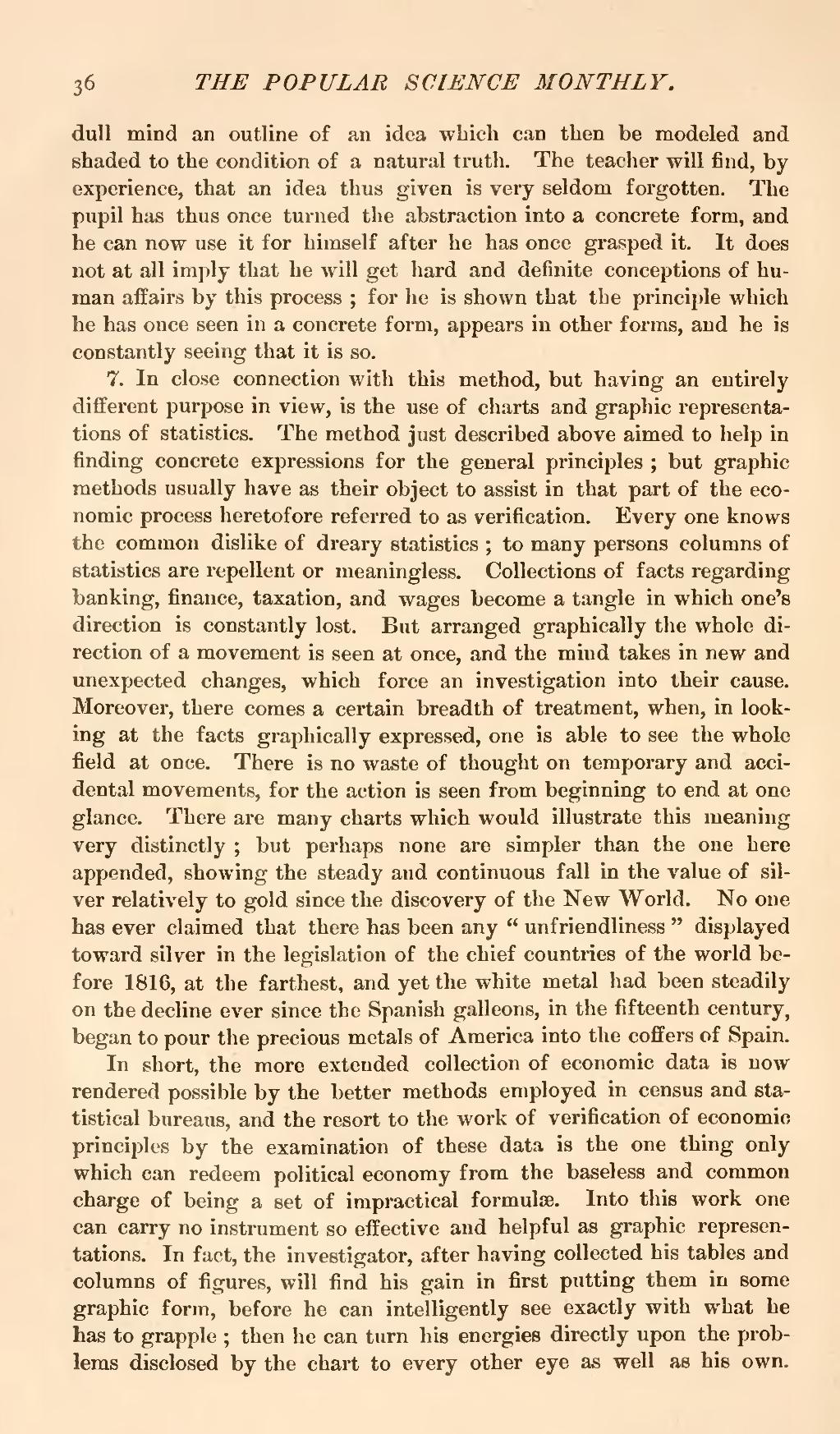dull mind an outline of an idea which can then be modeled and shaded to the condition of a natural truth. The teacher will find, by experience, that an idea thus given is very seldom forgotten. The pupil has thus once turned the abstraction into a concrete form, and he can now use it for himself after he has once grasped it. It does not at all imply that he will get hard and definite conceptions of human affairs by this process; for he is shown that the principle which he has once seen in a concrete form, appears in other forms, and he is constantly seeing that it is so.
7. In close connection with this method, but having an entirely different purpose in view, is the use of charts and graphic representations of statistics. The method just described above aimed to help in finding concrete expressions for the general principles; but graphic methods usually have as their object to assist in that part of the economic process heretofore referred to as verification. Every one knows the common dislike of dreary statistics; to many persons columns of statistics are repellent or meaningless. Collections of facts regarding banking, finance, taxation, and wages become a tangle in which one's direction is constantly lost. But arranged graphically the whole direction of a movement is seen at once, and the mind takes in new and unexpected changes, which force an investigation into their cause. Moreover, there comes a certain breadth of treatment, when, in looking at the facts graphically expressed, one is able to see the whole field at once. There is no waste of thought on temporary and accidental movements, for the action is seen from beginning to end at one glance. There are many charts which would illustrate this meaning very distinctly; but perhaps none are simpler than the one here appended, showing the steady and continuous fall in the value of silver relatively to gold since the discovery of the New World. No one has ever claimed that there has been any "unfriendliness" displayed toward silver in the legislation of the chief countries of the world before 1816, at the farthest, and yet the white metal had been steadily on the decline ever since the Spanish galleons, in the fifteenth century, began to pour the precious metals of America into the coffers of Spain.
In short, the more extended collection of economic data is now rendered possible by the better methods employed in census and statistical bureaus, and the resort to the work of verification of economic principles by the examination of these data is the one thing only which can redeem political economy from the baseless and common charge of being a set of impractical formulæ. Into this work one can carry no instrument so effective and helpful as graphic representations. In fact, the investigator, after having collected his tables and columns of figures, will find his gain in first putting them in some graphic form, before he can intelligently see exactly with what he has to grapple; then he can turn his energies directly upon the problems disclosed by the chart to every other eye as well as his own.
